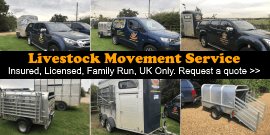How many animals can my grassland support?
This is a “piece of string” question. There are so many variables, such as the quality and composition of the sward, the climate and the weather, the soil type and aspect of the land, the size of the animal and its age (a large cow in milk needs an awful lot more grass than a growing lamb, for example), that it is impossible to give one answer.
What is definite, though, is that overstocking is bad for grassland especially where it leads to poaching. Poaching happens when grassland is subjected to mechanical damage from either hooves or wheels, when the soil is too wet to cope with it, resulting in conditions where air and water cannot penetrate the soil, where the grass roots are exposed to the elements to dry out and the grass leaves are buried and are unable to photosynthesise.
Poaching usually happens in winter and often round gateways, troughs and field shelters where there is heavy traffic. Very often animals are housed over winter, not because they cannot cope with weather conditions but to protect the grass from poaching. Seed merchants often supply mixes specifically for overseeding poached areas, but better to avoid the problem if at all possible.
However, understocking is also a bad thing. Grass benefits from being grazed; undergrazed grass will become tussocky, weeds will thrive and a valuable resource will be wasted.
In the pages that follow we consider stocking rates, livestock units and the major factors that impact on your own optimum stocking rates, including the production of forage and conservation grazing.
- Previous « Mechanical operations
- Next Livestock Units »

About Rosemary Champion
Rosemary lives on a 12 acre smallholding in Angus, in the east of Scotland, where she keeps Ryeland Sheep, Shetland cattle and assorted poultry. She was destined to be a smallholder from an early age.
Further Reading
 Weed Management for Organic Farmers, Growers and Smallholders Gareth Davies |  Improved Grassland Management John Frame |










